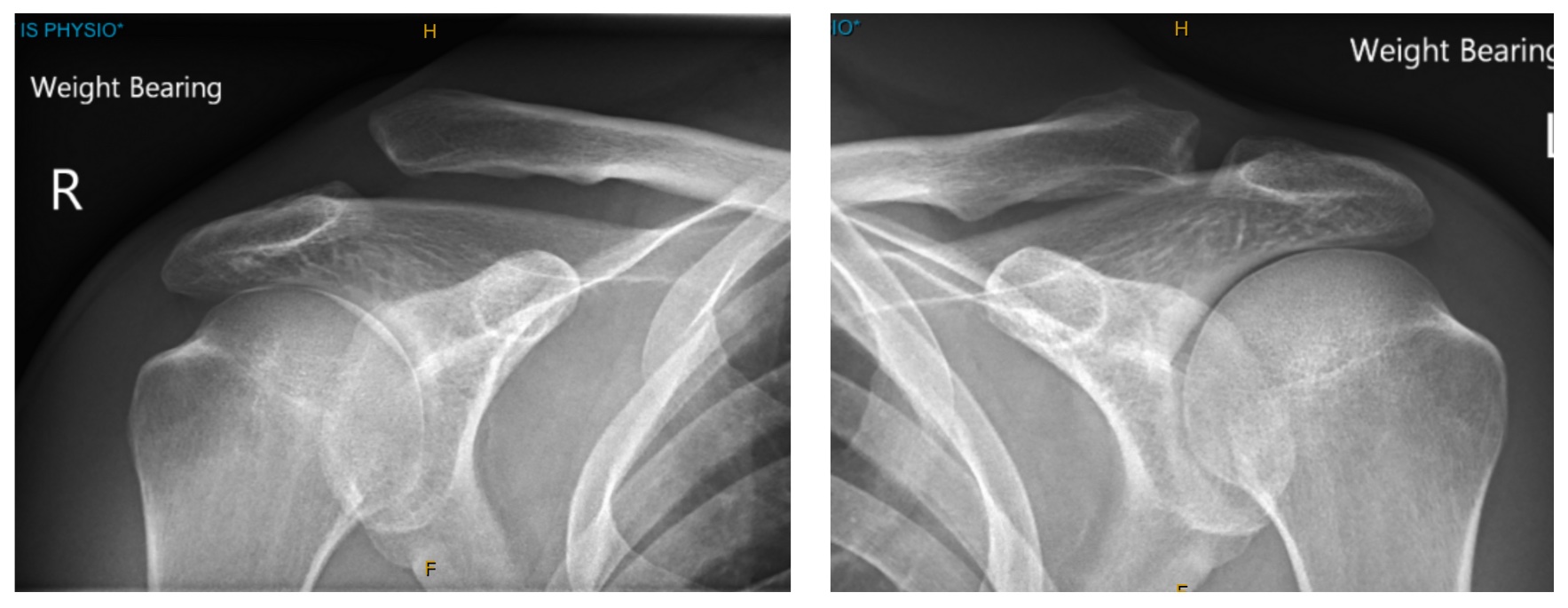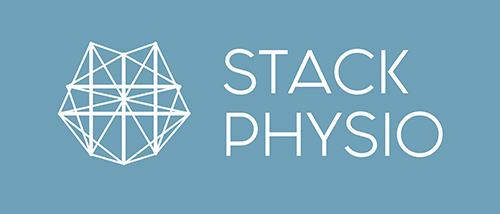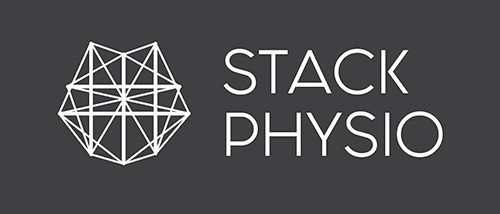
This is a tale of an AC joint dislocation, and how to come back from it.
It was a balmy evening down at Wednesday night social touch rugby. With a bit of fatigue in the legs and chest, and probably a bit too much confidence with a couple of tries under belt already, I dove to score a try on my right arm. I got lazy on the landing and I pulled the arm in a little, causing me to land heavily onto the point of the right shoulder. I heard and felt an incredibly clean snap, and the immediate sense that something in my shoulder was out of place. Please don’t be my glenohumeral (shoulder) joint, I thought, as I rolled over and up into kneeling. I looked down and saw my clavicle (collarbone) sticking way up where it is not supposed to be. At this point in time it wasn’t all that painful. Clearly, the bone had to go back in place, so I did little manoeuvre, was able to reduce the joint back into position, tucked my arm into my shirt and slowly walked off the pitch.
The benefit of being a sports physio incurring this injury was that I was able to go from injury mechanism, to suspicion, to knowing the diagnosis, to reducing the joint (meaning to put it back in place), to acute management, to a rapid sinking feeling of “dammmmitttt” – all in the space of about 10 seconds flat.
Diagnostically, I knew I had sustained an acromioclavicular (AC) joint injury, which is the joint where the end of the collarbone meets the shoulder blade. Once you’ve done this injury, known technically as a Grade III AC joint dislocation/separation, you injure all the stabilising ligaments around the joint, and your collarbone will forever more stick up in the air, creating a bump above the shoulder. Just to remind you of what you’ve done.
The good news? Most don’t need surgery, and in the mid to long term most people get back really good function, including being able to play contact sports and lift heavy weights.
The bad news? They hurt a lot. Basic tasks get veeeeery difficult for a little while. Read on to find out more.
How do you look after these injuries?
There are 6 grades of AC joint injury as described on the longstanding Rockwood classification. Grades I and II are milder, and do not require surgery. Grades IV to VI are gnarlier, and require surgery. Grade III is the grey area – generally surgery is not required, but there is some contention around this. I consulted with one of my Orthopaedic colleagues after my X-rays, to make sure he thought I wasn’t being a fool to rehab it. He gave me the green light to rehab first, with surgery only if needed, should the joint remain unstable.
However, there is a limited amount of consensus on what a good rehabilitation programme looks like for these injuries. So I set out to do an N=1 study (in other words, I’m the only participant in the study, there are huge risks of bias, and you can’t generalise what worked for me and assume it will work for you!), and I’ll record the whole thing here. For all the physios and health professionals out there, feel free to take the parts you like, and consider those that conflict with your current practice. For the public, please don’t take this pathway as a substitute for getting a good physio and your sports medicine team to advise you on what to do in your situation!
Here’s the detailed breakdown of how I approached rehab for this injury.
WEEK 1.
Within about 20 minutes post injury, I was in a world of hurt. I couldn’t lift the arm at all, walking hurt, and any little movement aggravated the joint. In the days after it swelled up and after a few days a yellowy bruise inhabited the shoulder. So the approach this week was:
Rest. Essentially full time in a broad arm sling, including sleeping in it. Basically only taking it off to rest with the arm supported under the elbow, or to shower and dress. More on that soon…
Movement? Shit no. For one, it felt horrible, sharp pain every time. Two, I could feel the unstable joint sliding around all over the place. Sometimes you have to know when to let things lie.
Ice? This didn’t feel great for my shoulder. I iced a couple of times, but given that the research is currently a little unconvincing about its benefits, and it wasn’t helping as an analgaesic, I gave it away within a day.
Medications – pharmacist-dispensed, over-the-counter naproxen 275mg three times daily with food, plus paracetamol 1000mg three times daily. This kept on top of the pain fairly well for me.
Lifestyle – no alcohol, ate more veggies and fruit than normal, and some more probiotics to keep my immune system going, aiming to limit inflammation. I was able to keep working in the clinic, but unable to work in my emergency department role.
Psychological – Keeping positive. Grateful that it could be worse, I’m able to work, I’m expecting it to get better, and all told I don’t have much to whinge about.
The good? I could still work, in the sling, provided I didn’t use my right hand. Thankfully I had a lot of rehab consults and not too much manual treatment in the days after the injury. Shout out to my patients for being understanding!
The bad? SLEEP! So difficult. Sling on full time for the first 4 nights. Lying on my back, with short stints on the left side with the right arm, propped up on a big pillow. I’d be lucky to get more than half an hour at a time in the first couple nights. It gradually got easier, but very limiting and still waking 10-12 times a night, not to mention the pain getting up and down. DRESSING! When your 7 year old son has to take t-shirts on and off for you, you’re in strife! When taking a shirt off, I could feel the joint starting to come out of place (which it did on three occasions…not fun…) SHOWERING! Very hard to wash, well, anything properly when you’ve got an arm that can’t move and it hurts to bend forwards!

Here’s what the X-rays look like – note the widening and the vertical separation of the right AC joint, consistent with the aftermath of an AC joint dislocation; and for the eagle eyes, what may well be an old bony injury to the left distal clavicle!
WEEK 2.
The first turning point. By the end of week one my traps were sore, my posterior cuff was locking up and I felt like I needed to be out of the sling. I said to myself I’d be good and stay in the sling for 7-10 days. After day 7, I stopped using the sling, and felt better and better from that point on.
A little protection – avoiding any carrying, pushing/weightbearing, fast movements, cross body movements etc. Basically, things that caused sharp pain or a sense of instability. Don’t poke the bear.
Medications – no more.
Movement – time to start rehab! I found very quickly that I could get relief – and reduce (stabilise) the joint – by doing controlled external rotation, with the arm 40-60deg out from my side. I’d do this 5-15 times, several times an hour. Seriously.
Rehab – twice daily – body weight (then banded or dumbbell) external rotations 2×15; scapula/arm “As”, with the arm 30-45deg from my side, light resistance, 2×15; four point kneeling half scap press 2×10; full cans, initially body weight and part ROM, progressing to 3kg and to 100deg abduction, 2-3 x 10-15. Why these drills? The overarching criteria around exercise choices was to pick things that a) felt good b) helped the joint to reduce (i.e. palpating the AC joint to make sure it was drawing into a better position) whilst exercising. Unsurprisingly, there is a close correlation between these two criteria! Concepts of the delto-trapezial sling as an external reinforcement for the AC joint also informed the exercise choices.
Loading – if you look at most injuries in the body, early loading (i.e. weightbearing and strengthening) assists healing and function to return quicker. There’s not much specific data on this for AC joint injuries, but I’ve set out very specifically to load it early, in ways that don’t aggravate the joint.
Water – down the beach every other day, spending 10 minutes submerged and gently working the shoulder into all non painful range – blissful!
Interesting – while rows feel good for most shoulder issues, they felt garbage for me. Prone scap sets were out. Wall slides and any wall weightbearing was no good.
Days 8-10 – in the gym doing machine weights for lower body, spin bike and left single arm strength drills. Rehab only for right arm
Day 11 – Started the right arm on kneeling cable pulldowns slowly through full range, 3×8 @ 10kg, these felt great and assisted flexion range; standing bent over shoulder external rotations, 3×15 @ 2kg DB; full cans 3×10 @ 3kg; bicep curl 3×15 @ 8kg; and came out of the gym with the shoulder feeling its best yet.
Day 12 – 4km jog, kept the wing tucked in, but was able to complete this with minimal issues. For the first time the AC joint didn’t feel unstable with impact.
Markers – by Day 13 I had near full flexion and abduction; full external rotation; limited extension; horizontal flexion to 15deg. Pretty damn good for an AC joint dislocation I think. I could hold a plank. I tried to do a pushup. No way.
The good? Going from very little range, to quite good range, in the space of a week. Nice to be exercising the shoulder again. Also being able to start using the arm more in an incidental way at work. Being able to wash your armpits is also fantastic.
The bad? Still waking 6-8x a night, and hard to get comfortable – so sleep still a significant issue. Taking off a t-shirt still not enjoyable. And a heap of achy pain in upper trapezius and the posterior cuff muscles.
WEEK 3.
By now I’ve got near full range, with a little pain there, but still have to watch out for any loaded pushing through the shoulder (e.g. getting out of bed), fast movements (catching a ball while playing with my son) and sustained positions. The bump is now very prominent, as the swelling has settled; I can exaggerate it with movements of depression and internal rotation; abduction and external rotation still help to reduce the joint, but probably not as much as before. A bit of frustration creeping in this week, despite the fact that overall I’m making really solid progress.
Rehab – 3x upper strength in the gym, plus some additional scap stability (prone scap sets, prone overhead shoulder hurdles, band scap As, single arm kneeling scap press) and rotator cuff work (band/dumbbell external rotation in varying ranges, full cans) at home.
Gym progressions through the week:
Barbell bent over row (slow) 2×12 @20kg >> 3×12 @ 50kg (felt much better after a few sessions)
Single arm dumbbell press 4×15 @6/8/10/10kg (avoiding deepest 20% of range) >> 15kg (had to go slow with this)
Short lever lateral raise 3×10 @4kg >> 3×8 @8kg
Single arm cable pulldown 3×12 @17.5kg >> 22.5kg
Bicep curls 8kg >> 12.5kg. Also added in a cable chest press later in the week.
Yoga – this week I started doing a little weightbearing work, and by the end of the week was back into downward dog! You don’t want to see how crap I am at that pose. Child pose now feels good, I can stretch the arms to each side there, I can handle a triangle pose, and gently push up into cobra. But holding a low plank or transitions with weight are too much.
Insights – So the joint isn’t as sore now, but I’ve taken to the massage gun this week (I’ve been using the Theragun Prime) which has been handy for managing soreness through my traps and posterior cuff. sitting at a desk typing – joint gets a little achy, and traps tighten right up. Important to consider shoulder positioning and support where able.
Markers – first full pushup @ 3 weeks and 3 days; yoga resumed; paddled a board around a swimming pool. (?? maybe surfing at 6 weeks)
The good? Nailed my first pushup this week! 3 weeks and 3 days post injury. Minimal pain. Happy with that! I don’t have to use a pillow all the time when I’m sleeping either.
The bad? Still haven’t had a night of waking less than five times, with the joint getting achy when it finds itself in across my body or stretched in some way. Can’t do quick movements yet (e.g. catching a ball) – won’t be back on the touch field for a couple of weeks! Long levers still no good (pec fly, cable woodchop etc)
WEEK 4.
This week saw progress keep slowly climbing, with steady increases in strength in the gym as well as more ease in day to day tasks. I was a little less consistent in the gym, more due to time restriction than anything, but what I found was:
Gym – still unable to bench press.
Single arm bent over shoulder external rotation; full cans to 120deg; dumbbell lawnmowers; 2 rounds x 8 reps each continuous @3kg
Passive to active hangs on bar – 3x6x3second holds (felt reluctant to do a dead hang!)
Deadlifts 4×12 @ 60/70/70/70kg
Chin ups 4×4 – including supine, mid, and overhand grips
Dumbbell chest press – single arm 3×12 @15kg (limiting end range) right 25kg
Short lever lateral raise 3×8 @8kg (left 10kg)
Bicep curls 3×8 @15kg
Pump session – a shoulder seris consisting of short lever lateral raises @ 6kg, short lever front raise @6kg. bent over dumbbell lawnmower @5kg, Cuban press @5kg. 8-10 reps each, no rest between. 2 mins between rounds, x 4 rounds. Shoulders a bit gassed after this! Nice to feel some muscle burn.
The good? Starting back into some normal lifts in the gym, and feeling like I can use the arm again.
The bad? Sleep still not great. However, more uncomfortable as opposed to painful.
WEEK 5.
This week saw some milestones go down!
Touch rugby – the triumphant return! Ran it around pretty slowly, and didn’t throw the arm out quickly or launch any big passes, but felt not too bad. Had a couple of scares where I went a bit too close to diving too soon (can’t take the dumb male out of me…) but managed to pull back before too late.
Surfing – sure, the waves were slop, but nonetheless I managed to get a little splash in. Fared quite well paddling around, all considered.
And, of no small significance, my first full night of sleep where the shoulder didn’t wake me!!! Miracle.
Gym – starting to resemble a more conventional lift, though the weight and reps remain restricted.
Seated cable row 4×10 @ 65kg
Dumbbell circuit 3 rounds @ 4kg: short lever lateral raise 1/2 bent over; full cans to 120deg; bent over reverse fly
Push-ups 4×10
Chin ups (supine grip) 4 x 3
Bicep curls 3×12 @ 15kg
Single leg squat, 2x15kg dumbbell hold 3×8 each leg
Romanian deadlift, 3×12 @ 60kg
WEEKS 6-8.
This, dear reader, is where I fell into the classic trap of most individuals. As a physio, what we see is that our patients commit to a program and a plan while there is incentive – typically, pain. When you’re in pain you are willing to work hard to get out of it. And when you lose function, likewise. But as you improve, and generally once you’re at a point of 70-80%, you fall off the horse. Lose focus and consistency on your program. Which is exactly what I did.
Not as many gym or rehab sessions, although we did manage to win our touch rugby final and I was running a little more. And despite Perth being Perth, I got the occasional surf in. By this stage the shoulder was not giving me much grief on a daily basis, and as such I could do my normal work, life and activity without it getting in the way too much.
Which is actually a really great result when you consider the messed up state my AC joint was in less than two months prior. A good reminder that the hard work in rehab is worth it, that these injuries are generally good (and forgiving) healers, and that the body is a pretty amazing adapter.
So rather than break down the detail, here’s the facts as I interpreted them around week 8.
Gym strength – 80% (bench press 60%)
Yoga capacity – 70% (of my usual mediocre level)
Sleep quality – 90% (no excuses due to the AC joint now)
Work capacity – 100%
Life capacity (aka lifting and moving stuff…) – 80-90%
Wrestling my 7yo son – 75% (I’ve still got him covered)
So at this point, barring any unforeseen issues, I’ll close this injury chapter and settle back in for the next wave of yoga, gym, surfing and life. I hope this has given you insight for how to approach this injury if you are unlucky enough to do one yourself.
Although, as mentioned, arguably not the most unlucky injury out there!
Good luck. 💪
Ben, April 2023

